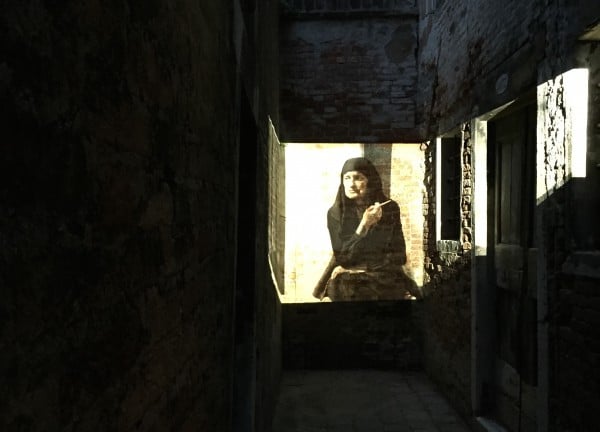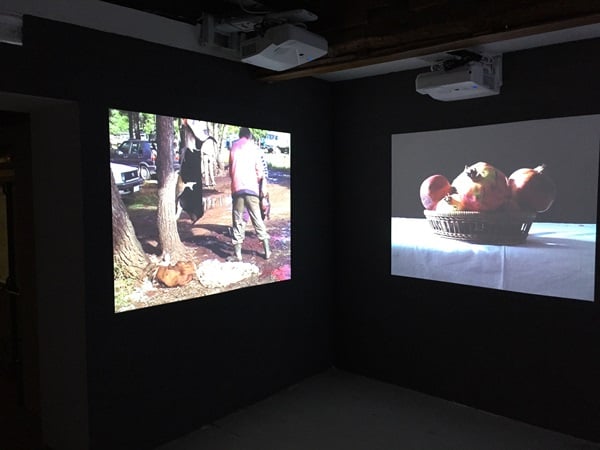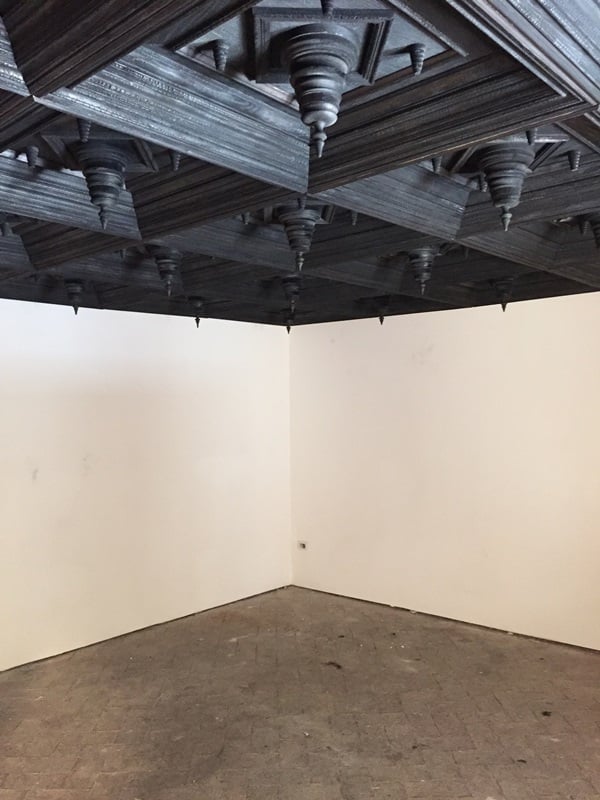Art & Exhibitions
Aleksandar Duravcevic Brings Fragments of Epic Violence to Venice Biennale’s Montenegro Pavilion
"Instead of fighting amongst themselves, kids would fight dogs."

"Instead of fighting amongst themselves, kids would fight dogs."

Artnet News


Aleksandar Duravcevic, Waiting(2015), video.
Photo: Courtesy of Aleksandar Duravcevic.
When the 56th Venice Biennale opens to the public on May 9, Montenegro-born Brooklyn-based artist Aleksandar Duravcevic will unveil work in the Montenegro Pavilion. Brooklyn Rail editor Phong Bui recently met with the artist in his studio in Gowanus to discuss the work that was selected to represent the pavilion. Following is an edited version of a longer conversation between Bui and Duravcevic about the artist’s practice.
Phong Bui: I’ve always felt that your work seems to allude to, on one hand, a sense of memory and, on the other, to a need to make memories concrete, as objects. First of all, I mean memory as Proust used it, as an involuntary catalyst or an “essence of the past”—a memory associated with a particular episode with the potential to open the floodgates to other indirectly or directly related episodes.
Aleksandar Duravcevic: Yes I like that: floodgates. For me, it refers to the experiences that I had in Montenegro [then Yugoslavia]. It was such a violent society that I grew up in. Maybe the ’80s were also a violent period. And in some ways I see myself as a witness. Yet I was always interested to know, did we all see the same thing? Did we all witness the same event? How did you see it differently from how I saw it? And how do our stories of the events match or mismatch? And I think that is, to a great extent, the way history gets written. It doesn’t matter if it is a slaughter of a calf or a car accident or something else of epic importance.
How would you describe your struggle with issues of identity, your sense of dislocation, which I suspect in one way or another is the underpinning subject of the selection of works that will be shown at the Montenegrin pavilion?
I would say that the most demonstrative piece in the exhibit is “Red,” the five videos that I made between 1992 and 2002. Each, you could say, represents a specific fragment of memory. For example, the first one is of a basket filled with pomegranates sitting on a table, very painterly.

Aleksandar Duravcevic, Red (1992-2000).
Photo: Courtesy of Aleksandar Duravcevic.
Like a Zurbarán still life.
Or Caravaggio’s “Basket of Fruit.” There is nothing that really happens except for the changes from light to dark. The second video shows hands obsessively and repetitively cleaning the pomegranates, removing the seeds. The third video is of the squeezing of pomegranates from a press. The fourth one is of the slaughter of a calf in a public market, which makes a strong reference to Rembrandt’s portrayal of the brutal fact of life.
Do you mean Rembrandt’s “Carcass of Beef” that inspired Soutine’s “Side of Beef”?
Yes, exactly, although it also refers to the life and manner of the peasants without any of the sentimentality that’s apparent in Brueghel’s paintings. And the fifth, the last video, is a scene of a dogfight, which was taken when I was a kid—13, 14—in Podgorica where kids were fighting dogs all the time. In other words, instead of fighting amongst themselves, which they also did, they would fight dogs. It was kind of part of an old fascination with animal fights that goes back to Rome. But then later, just before the Bosnian war, it became significantly perverted. It turned into betting: people making money off of death. In any case, the five videos are installed in the first room, and they all share the color red, which can be read from the perspective of a religious or every-day ritual, as a reference to the violence that is conveyed through any form of sacrificial offering. Yet the underlying motive in each is also banal and everyday.
The second room is two fragments of a burnt interior—”Room no. 1 (Things Are Not What They Seem),” which is something of a surreal environment in a cinematic sense, not painterly. Its made out of wood, carved and [then] burned.
Would you say that the motif of the doors is a composite of what you saw among the cathedrals in Florence, as well as those in Montenegro where you grew up?
Yeah, it’s a hybrid of both memories. It’s a collage, or a juxtaposition of things that are adorned but, yet, seem fragile. … It’s a memory of a room not very different from erased drawing or squeegeed painting.
The third room is a love letter in the form of graffiti, which will be a frottage, rubbed from a Renaissance palazzo that I saw when I was a student in Florence, selling silk in Venice not far from the Rialto Bridge. … It was a love letter to a certain unknown Maria. … The work is an about 20” x 30” frottage of a 500-year-old love letter, which I thought related to the theme of the Biennale, “All the World’s Futures.” I thought there was a profound lack of love in that instance. Actually, it will be covered with postcards because Venice is a big postcard. And, in the last room, we’ll install “Identity” (2010 – 2014), which will be remade in bronze.

Aleksandar Duravcevic, Room #2 (2015).
Photo: Courtesy of Aleksandar Duravcevic.
“Albanians thought I was Montenegrin / Montenegrins thought I was Albanian / Italians thought I was a Slav / Latinos think I am Italian / Blacks think I’m French / French think I am one of their own.”
Which is self-explanatory. It’s also playing with stereotypes and with the ways that we see each other in the 21st century, as well as with the notion that Europe is going through this processes of unification and possible fragmentation through loosing members like Greece, we don’t know. But, these political ideas again go back to these strong beliefs that I’ve gained from experience—things do eventually fall apart. I grew up during Tito, and Tito was this absolute communist dictator, who lasted from World War II to 1980—a long time but one that ultimately ended. And then we had Milosevic who was in power as a socialist/nationalistic dictator from 1988 to 2000 who with other nationalistic leaders led the region into war of fragmentation, which now we call Balkanization. And that also went away.
Can you describe the inclusion of the video “Waiting” (2015)? And why you installed it outside?
From Spain to Greece, Mediterranean seems to be populated by old women standing, looking through the windows onto the street, or sitting in front of their houses waiting for someone. It is somewhat Becket-like absurdist theater of life, of a basic human condition: hope. The Montenegrin pavilion is on a small dead end street. I thought it would be great to have the video projected on the outside wall. She becomes a watcher, a guardian, one who possesses wisdom and knowledge.
This interview was originally published in the Brooklyn Rail, and has been reproduced here with the permission of the publisher. (c) The Brooklyn Rail 2015.
Featured image of Duravcevic by Spencer Heyfron for New York Magazine.